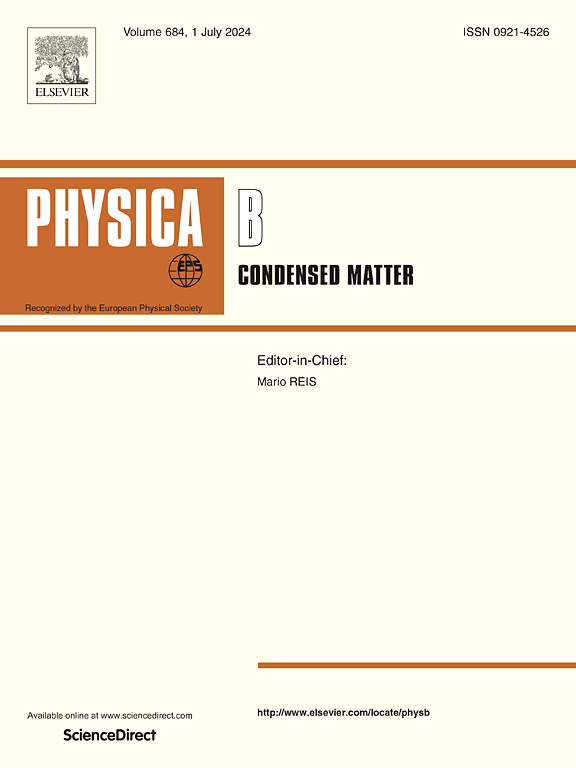Engineering of high surface defects in 2D-MoS2 nanostructures through CTAB surface functionalization for highly selective CO gas sensing
IF 2.8
3区 物理与天体物理
Q2 PHYSICS, CONDENSED MATTER
引用次数: 0
Abstract
A highly selective chemoresistive CO gas sensor is developed based on the ammonium surfactant functionalized hierarchical microspheres of 2D-MoS2 (C-MoS2) nanosheets. The samples were synthesized via a facile one-step hydrothermal process. The C-MoS2 was annealed at 400 °C to prepare the CA-MoS2. As a result, high surface area, enhanced defects, and reduced high-energy binding sites were formed in the CA-MoS2. Detailed analysis revealed the presence of tensile strain, breakage of the lamellae, and point defects in CA-MoS2. These conditions facilitated a fast exothermic reaction between CO gas and CA-MoS2 following the Langmuir-Hinshelwood mechanism. The developed gas sensors are exposed to CO, NO2, NH3, and H2 gases in a temperature range of 150–300 °C. The optimized CA-MoS2 showed high selectivity and sensitivity of 4.1 % towards 80 ppm of CO at 250 °C. Good cyclic reproducibility and stability over five weeks are also observed for the sensor.
求助全文
约1分钟内获得全文
求助全文
来源期刊

Physica B-condensed Matter
物理-物理:凝聚态物理
CiteScore
4.90
自引率
7.10%
发文量
703
审稿时长
44 days
期刊介绍:
Physica B: Condensed Matter comprises all condensed matter and material physics that involve theoretical, computational and experimental work.
Papers should contain further developments and a proper discussion on the physics of experimental or theoretical results in one of the following areas:
-Magnetism
-Materials physics
-Nanostructures and nanomaterials
-Optics and optical materials
-Quantum materials
-Semiconductors
-Strongly correlated systems
-Superconductivity
-Surfaces and interfaces
 求助内容:
求助内容: 应助结果提醒方式:
应助结果提醒方式:


